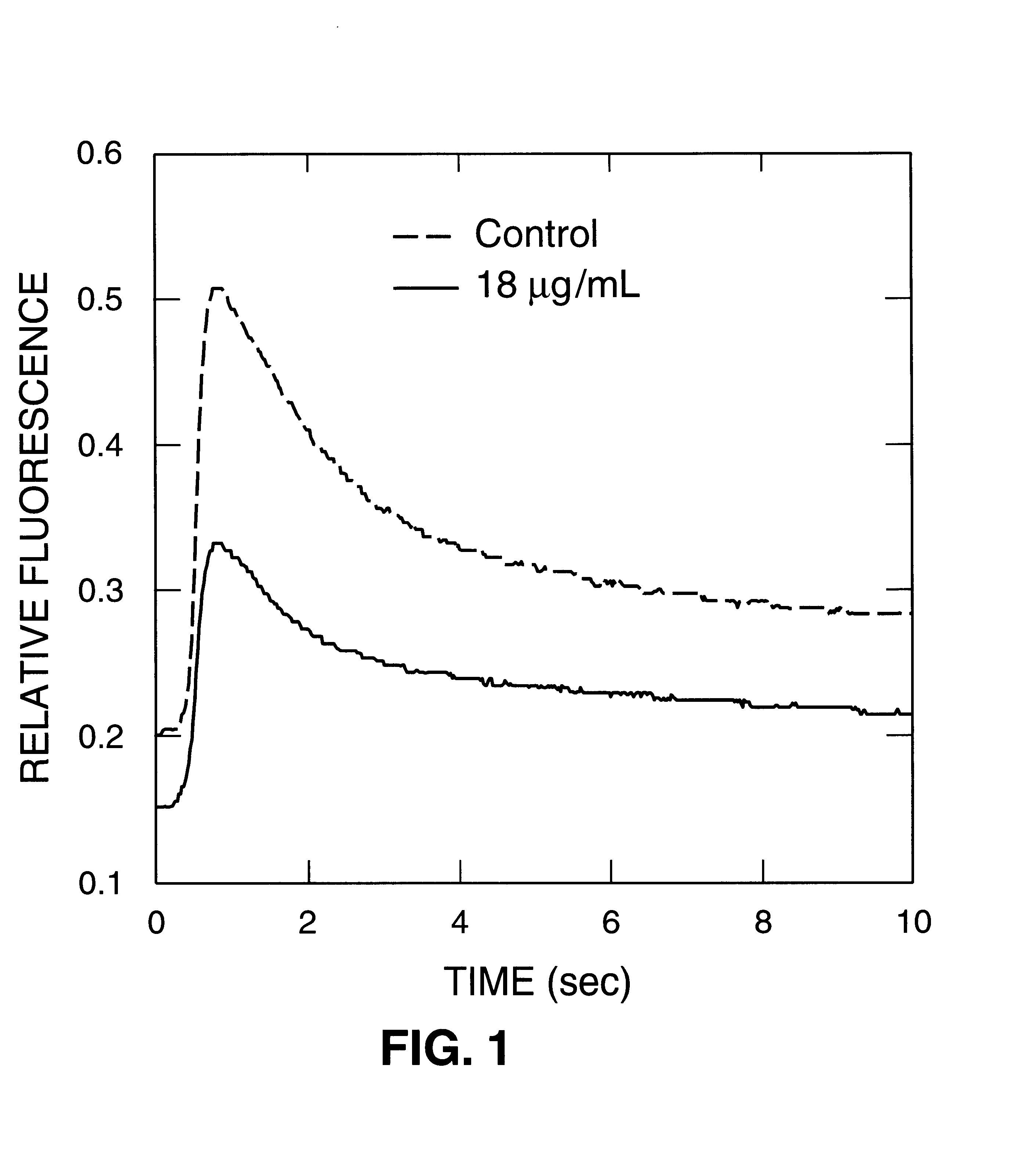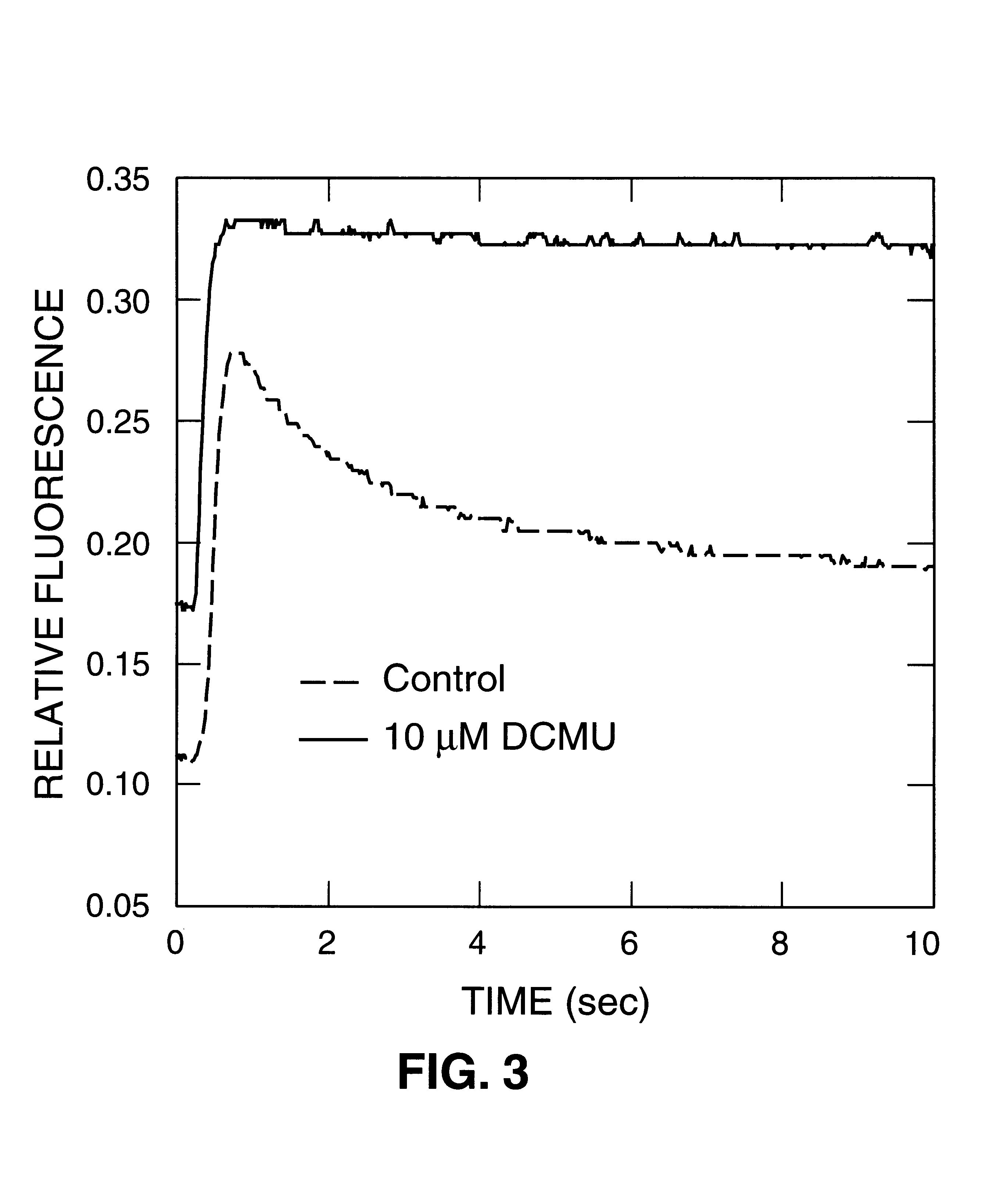Tissue-based water quality biosensors for detecting chemical warfare agents
a biosensor and tissue technology, applied in the field of indigenousphotosynthetictissuebased biosensors for detecting chemical and biological warfare agents, can solve the problems of serious sensor fouling, unpractical remote, continuous monitoring, etc., and achieve the effect of reducing fluorescence and photosynthetic capability
- Summary
- Abstract
- Description
- Claims
- Application Information
AI Technical Summary
Problems solved by technology
Method used
Image
Examples
example ii
FIG. 2 is an illustration of the detection of potassium cyanide (KCN), a well known poison. The experimental protocol was similar to that of Example I above. Control and sample fluorescence curves are illustrated. Six minutes after exposure of the sample to a 2 mM final concentration of KCN, a clear difference between control and sample can be observed, including a widening of the maximal fluorescence peak (P) in the KCN curve that indicates slower fluorescence quenching after maximal fluorescence has been reached. The F.sub.o and F.sub.max values are altered as well. This fluorometric sensing technique can detect cyanide at concentrations below the minimum level for human toxicity.
example iii
The effect of herbicide 3-(3,4-dichlorophenyl)-1,1-dimethylurea (DCMU) on the water sample fluorescence induction curve was tested in a manner similar to Example I above. When DCMU was added to the cuvette, fluorescence increased considerably and was accompanied by a dramatic change in kinetic time course. A test fluorescence curve (FIG. 3) was recorded after a 6-minute exposure using a final concentration of 10 .mu.M DCU.
A simple biosensor 10 for carrying out the method of present invention is shown schematically in FIG. 4. A fluorometer 12 is attached to a cell 14 so that a cell window 16 faces the fluorometer input 18. The cell has an inlet 20 having an optional particulate filter 36 and an outlet 26 for passing water therethrough. A pump 24 draws water from the outlet 26 and expels same through an exit 28. The cell 14 could have a displacement pump which draws water into the cell and expels same through a common inlet / outlet opening (analogous to 20), obviating outlet 26 and exi...
PUM
| Property | Measurement | Unit |
|---|---|---|
| concentration | aaaaa | aaaaa |
| fluorescence | aaaaa | aaaaa |
| wavelengths | aaaaa | aaaaa |
Abstract
Description
Claims
Application Information
 Login to View More
Login to View More - R&D
- Intellectual Property
- Life Sciences
- Materials
- Tech Scout
- Unparalleled Data Quality
- Higher Quality Content
- 60% Fewer Hallucinations
Browse by: Latest US Patents, China's latest patents, Technical Efficacy Thesaurus, Application Domain, Technology Topic, Popular Technical Reports.
© 2025 PatSnap. All rights reserved.Legal|Privacy policy|Modern Slavery Act Transparency Statement|Sitemap|About US| Contact US: help@patsnap.com



